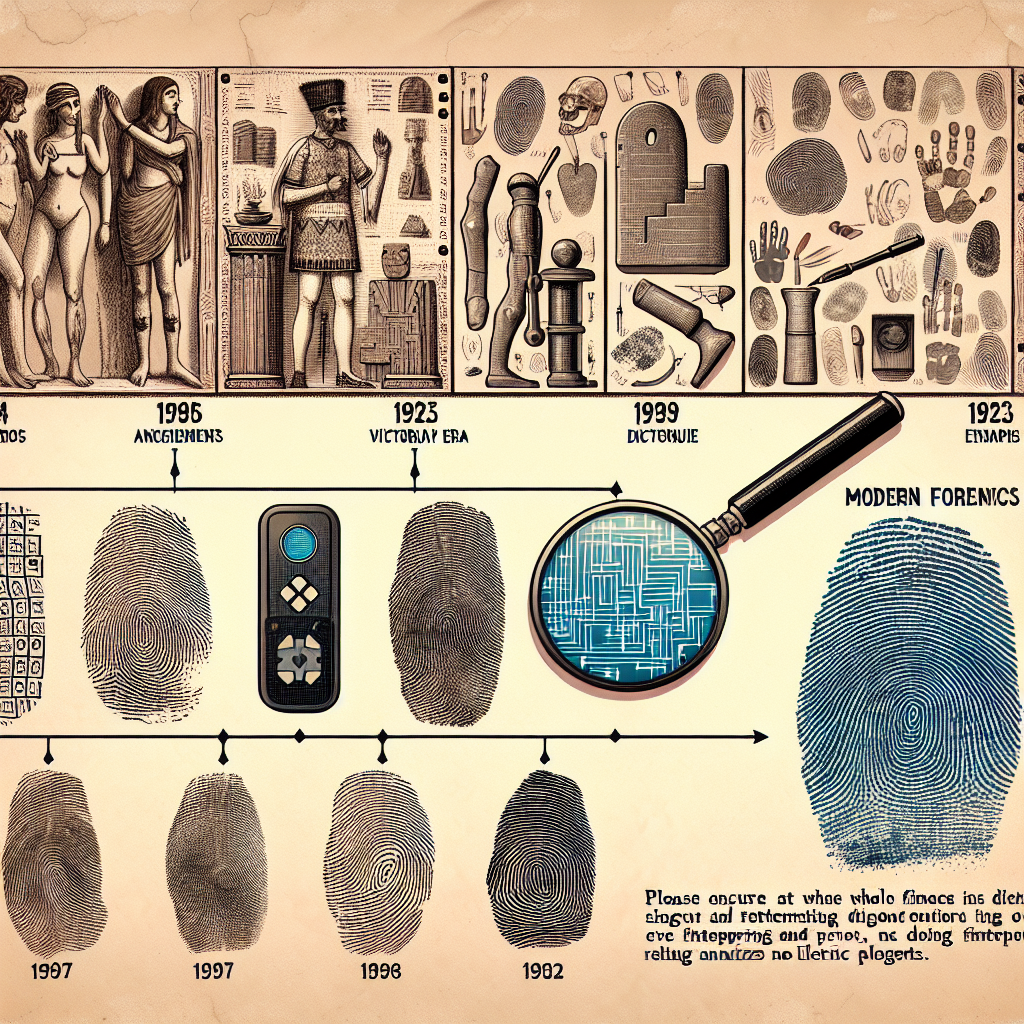Your cart is currently empty!
History and Evolution of Fingerprinting: From Ancient Civilizations to Modern Forensics

Fingerprinting is a widely used method of identification in modern forensics, but its origins can be traced back to ancient civilizations. The history and evolution of fingerprinting is a fascinating journey that showcases the development of this unique form of identification over centuries.
The earliest recorded use of fingerprinting can be found in ancient Babylon, where fingerprints were pressed into clay tablets for business transactions. Similarly, in ancient China, thumbprints were used as signatures on legal documents as early as the 3rd century BC. The ancient Greeks and Romans also used fingerprints as a form of identification, often using them to seal important documents.
In the 19th century, the study of fingerprints gained significant momentum thanks to the work of Sir Francis Galton, a British scientist who is often referred to as the father of fingerprinting. Galton conducted extensive research on the uniqueness and permanence of fingerprints, laying the foundation for modern fingerprint identification techniques. In 1892, Juan Vucetich, an Argentine police official, became the first person to use fingerprints in a criminal investigation, successfully identifying a suspect based on his fingerprints.
The breakthrough in fingerprint identification came in the early 20th century with the development of fingerprint classification systems. The most widely used classification system, known as the Henry Classification System, was developed by Sir Edward Henry, an English police officer. This system categorizes fingerprints based on their unique characteristics, making it easier for forensic experts to match prints to individuals.
Today, fingerprinting is an essential tool in modern forensic science. Fingerprint databases are used by law enforcement agencies around the world to identify suspects, solve crimes, and exonerate the innocent. Advances in technology have made it easier and faster to analyze and compare fingerprints, increasing the accuracy and efficiency of the identification process.
The evolution of fingerprinting from ancient civilizations to modern forensics is a testament to the enduring value and reliability of this form of identification. As technology continues to advance, fingerprinting will likely remain a vital tool in the field of forensic science, helping to bring criminals to justice and ensure the safety of communities around the world.
#History #Evolution #Fingerprinting #Ancient #Civilizations #Modern #Forensics,fingerprint

Leave a Reply